Abstract
1. Rates of oxygen consumption of albino and hairless mice were measured in a metabolism chamber during periods of approximately 5 or 24 hr. Rectal temperature was measured before and after each period. The chamber temperatures used were 22, 30 and 32° C for both albino and hairless, and in addition 34 and 36° C for the hairless mice.
2. The mean age and body weight of the albino mice were 102 days and 34·6 g; the corresponding values for the hairless mice were 87 days and 32·8 g.
3. The mean minimum rates of oxygen consumption (ml./kg.min) were 31·0 for the albino and 38·8 for the hairless mouse; the corresponding estimated critical temperatures were in the ranges 30-32° C for the albino mouse and 32-34° C for the hairless mouse.
4. The mean values for core-ambient thermal insulation (° C.m2.hr/kcal) were 0·418 and 0·328 for the albino mouse, and 0·275 and 0·221 for the hairless mouse, at 22 and 30° C respectively in each case.
Full text
PDF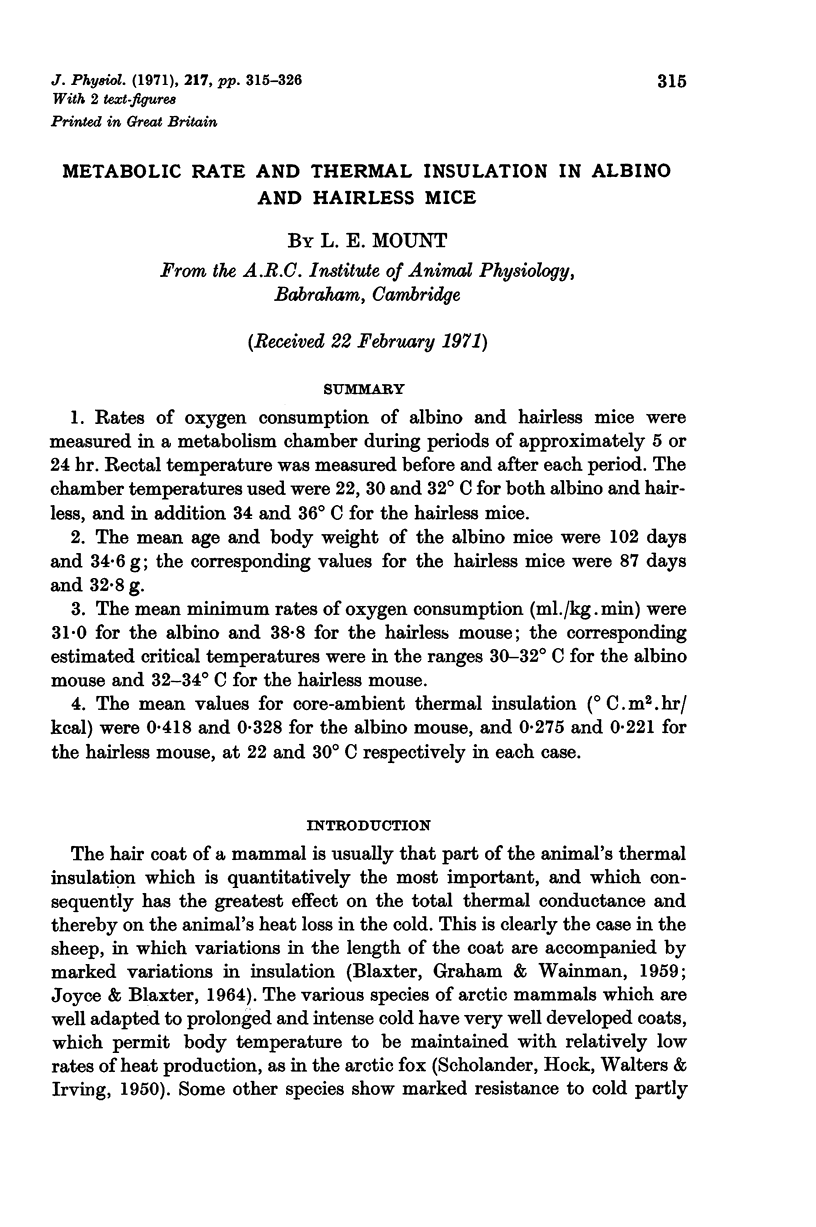
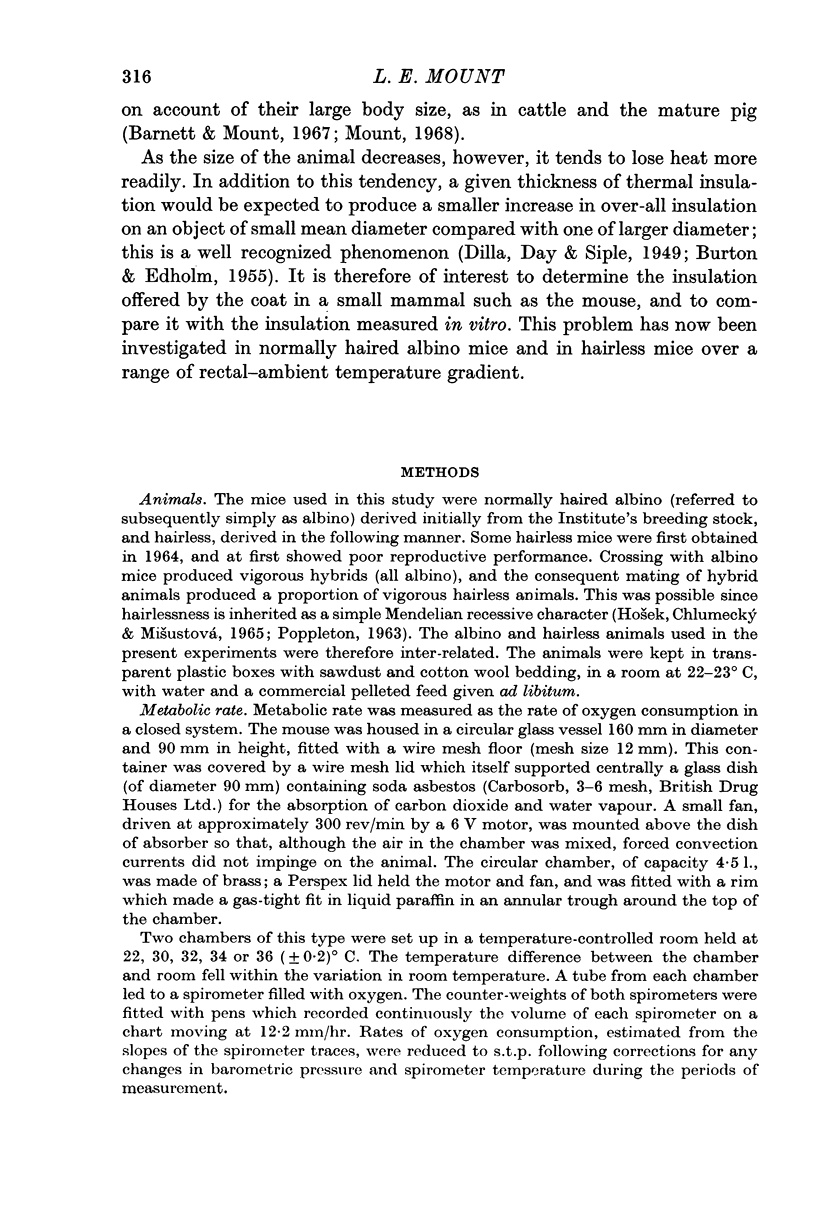
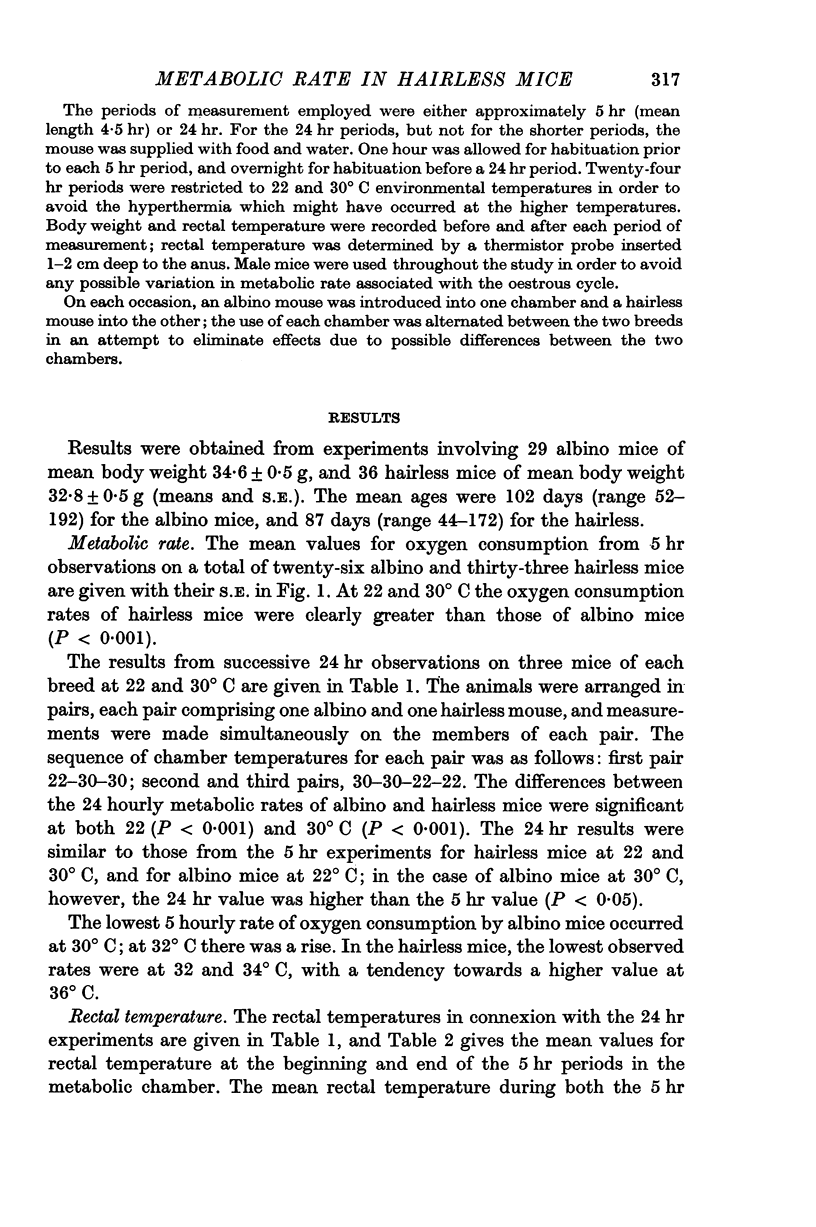

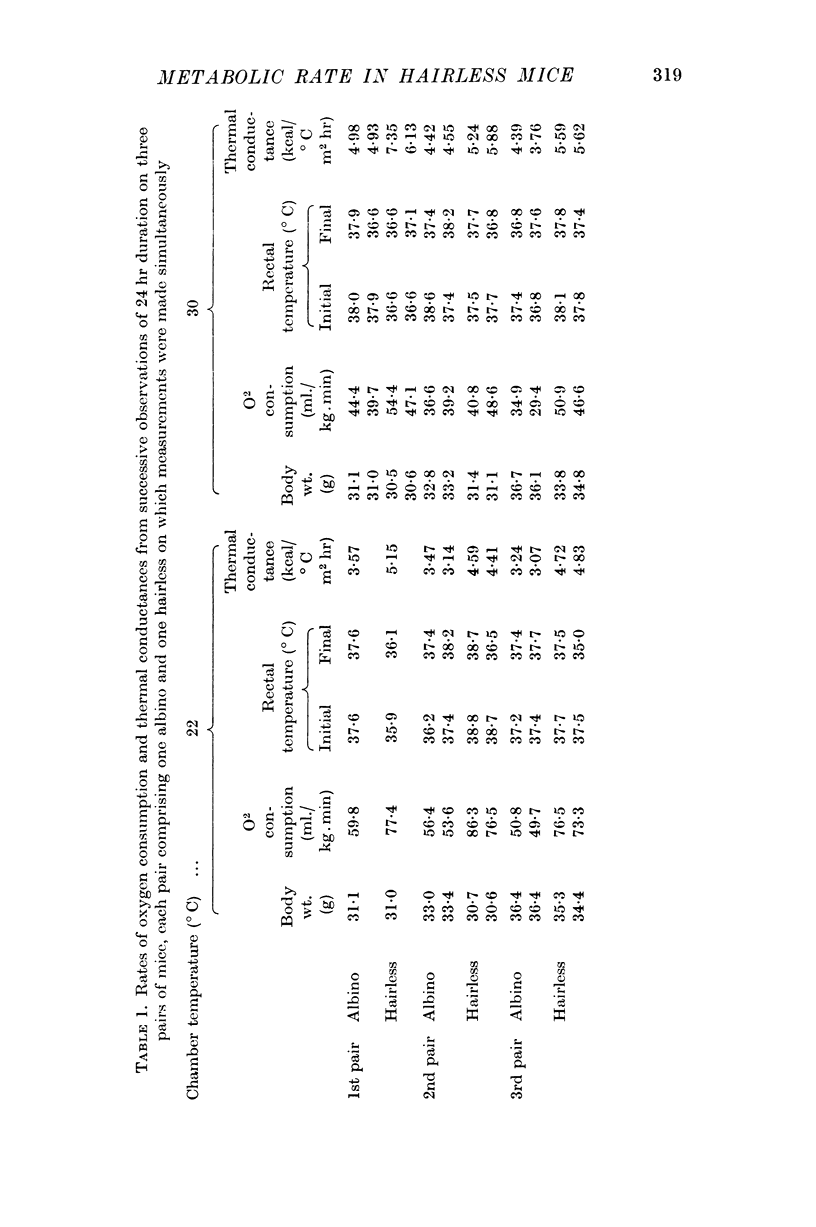
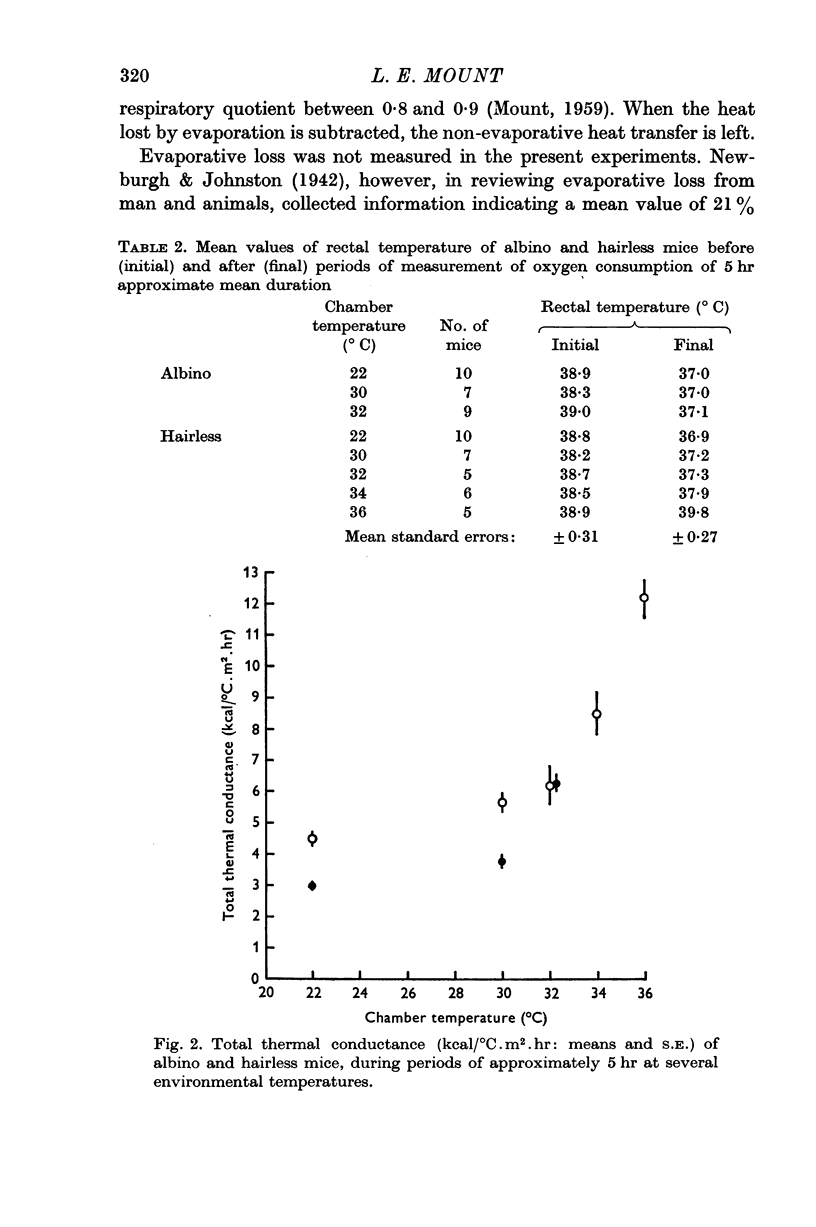
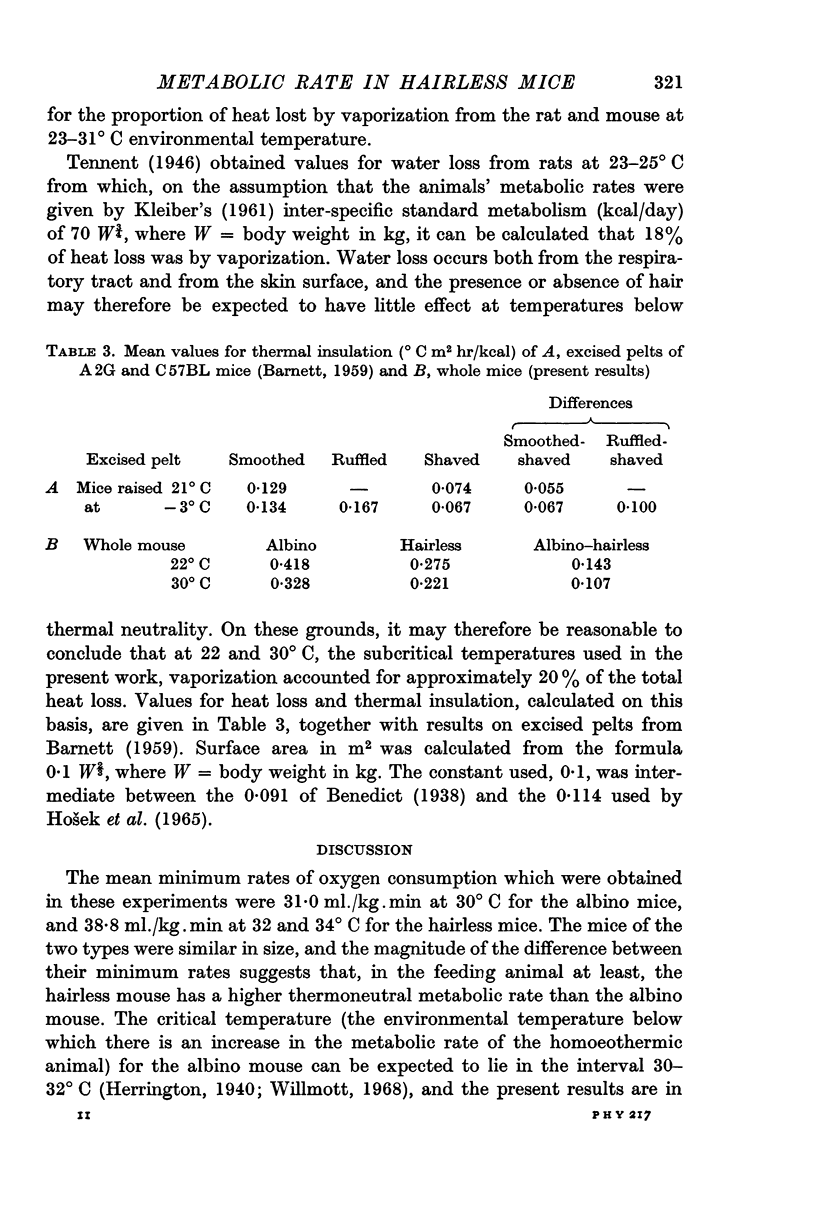
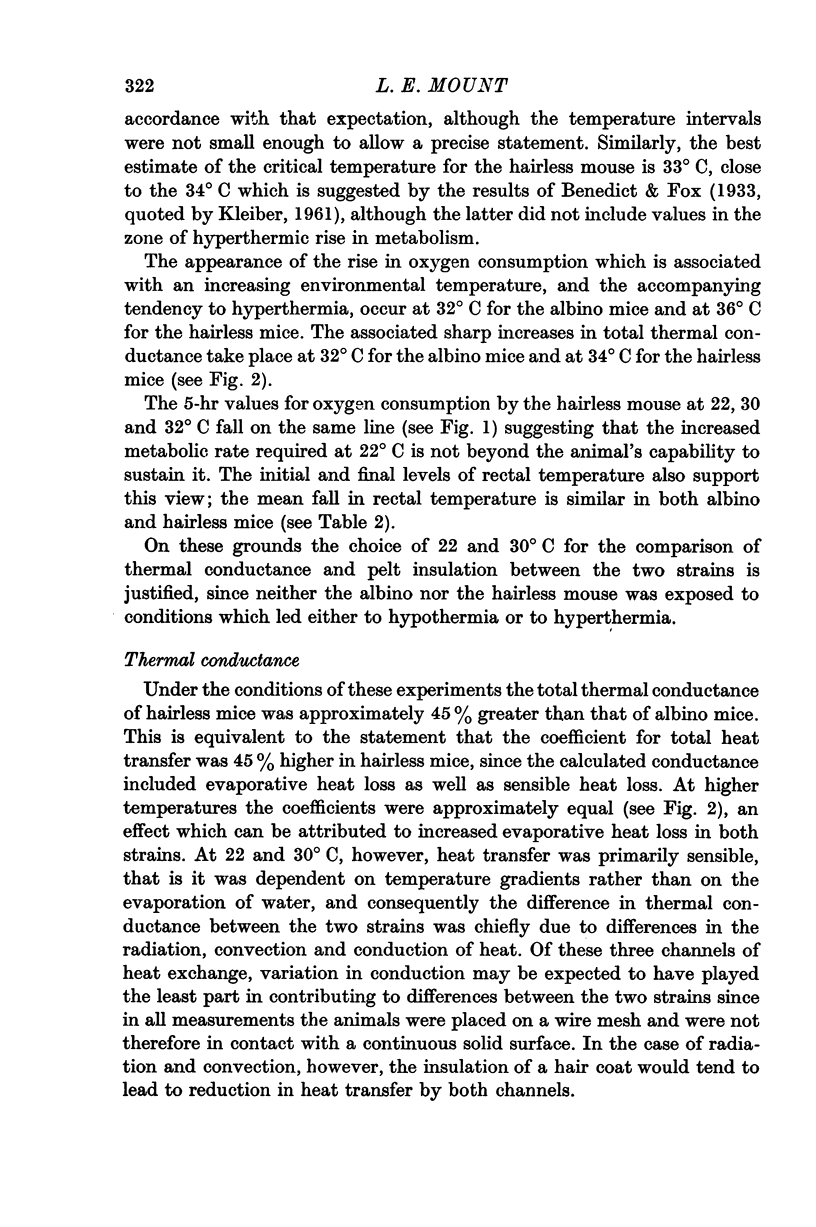
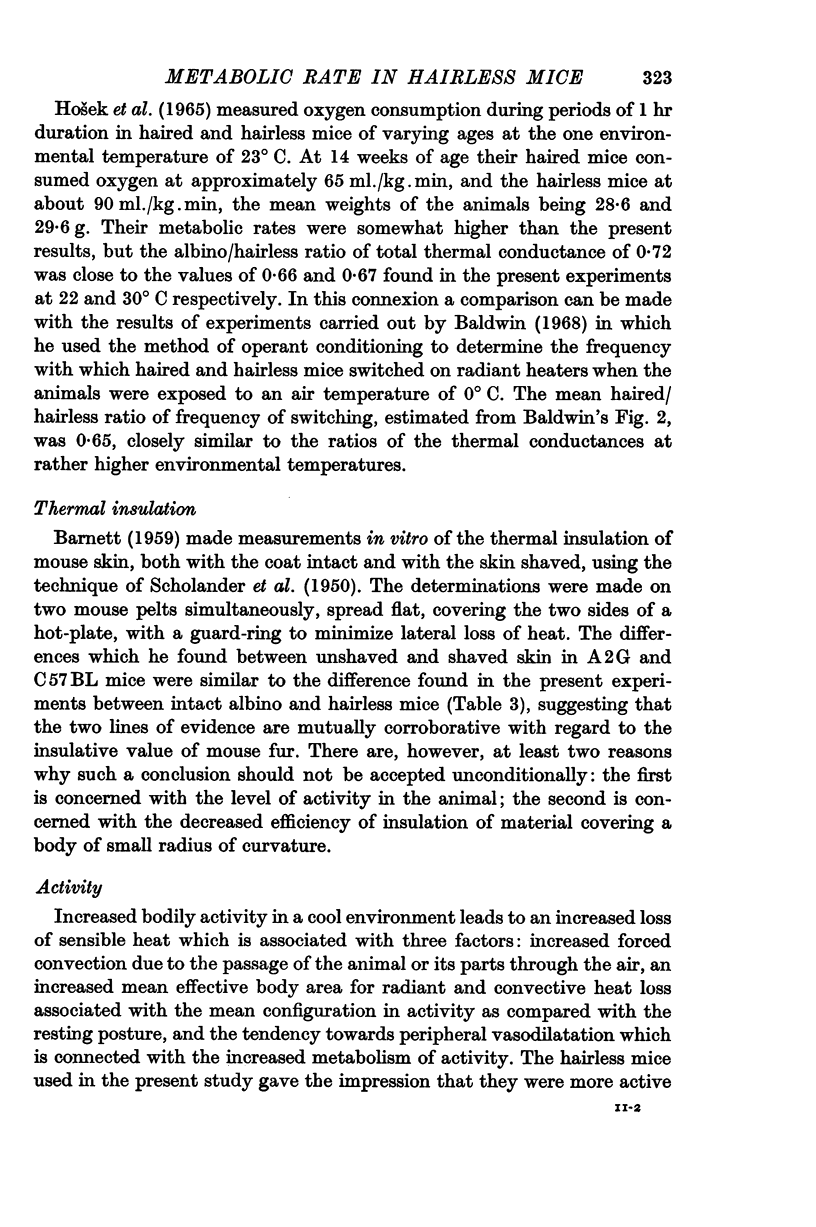
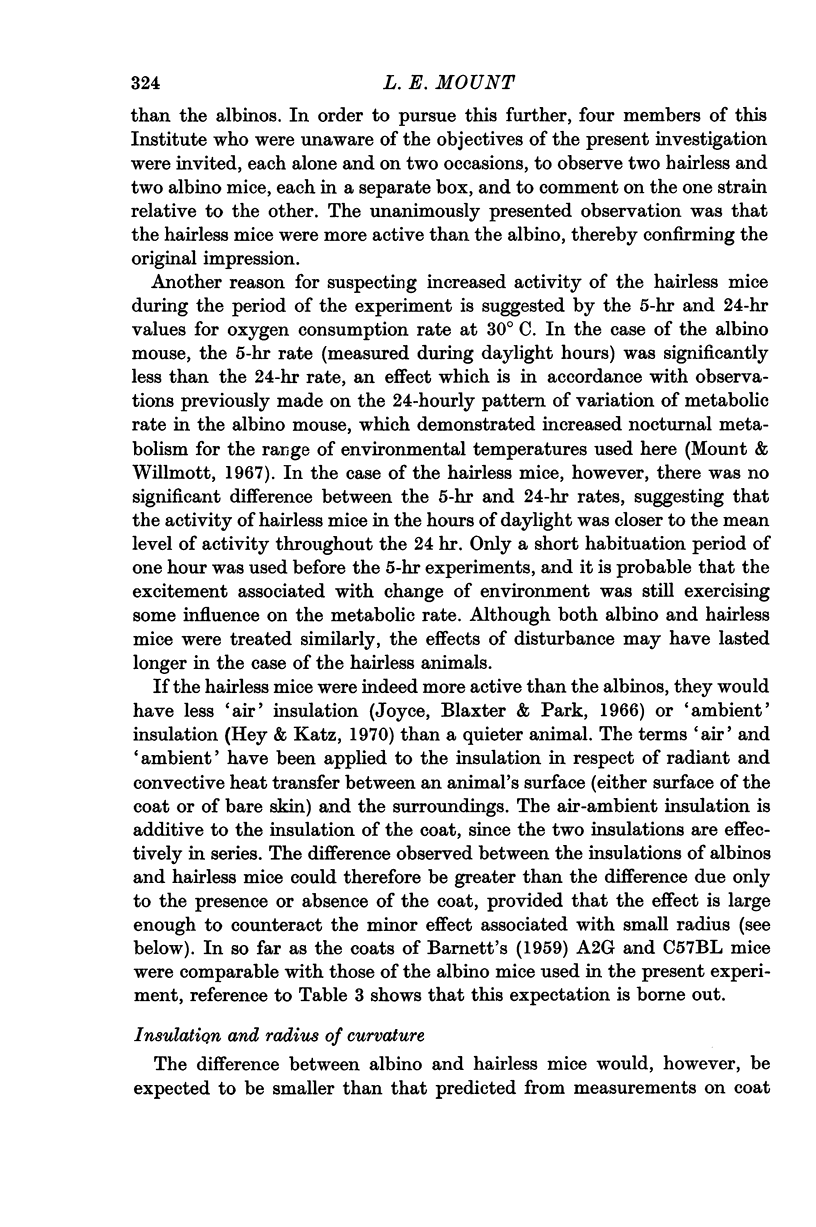
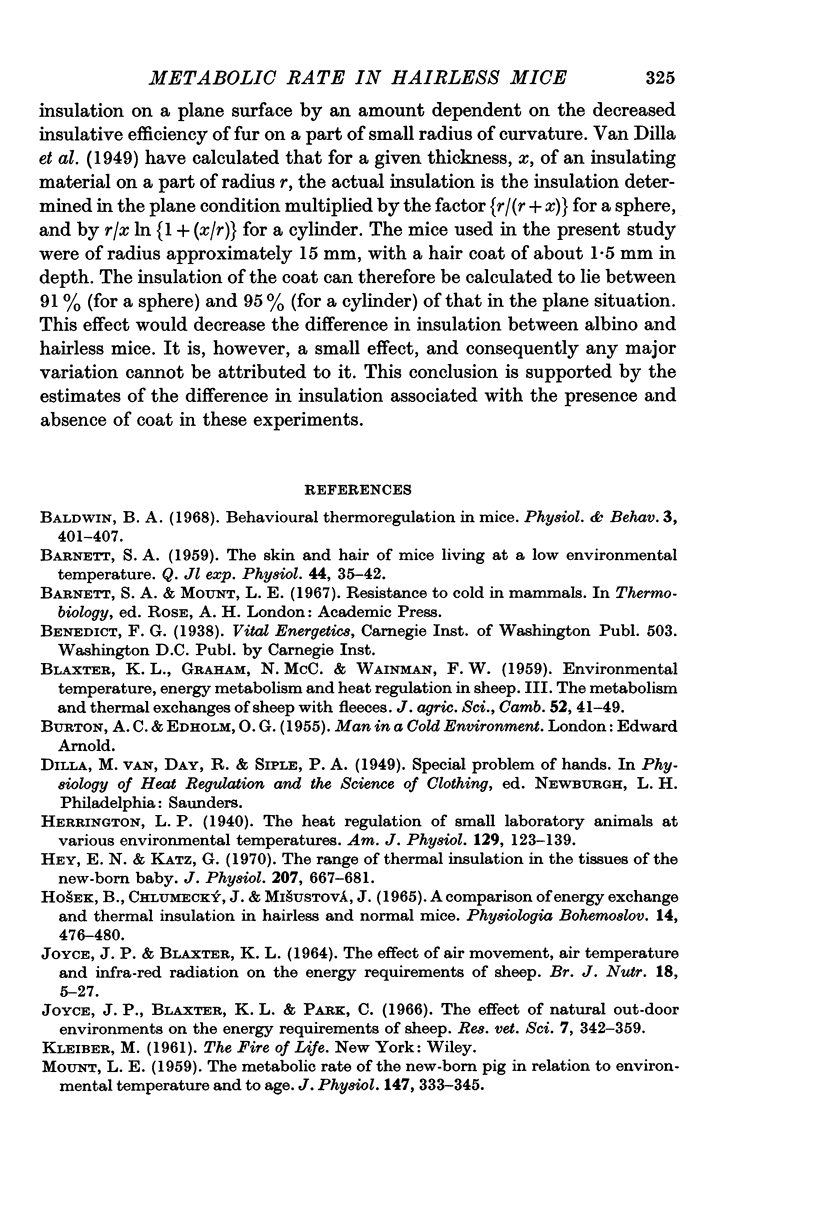
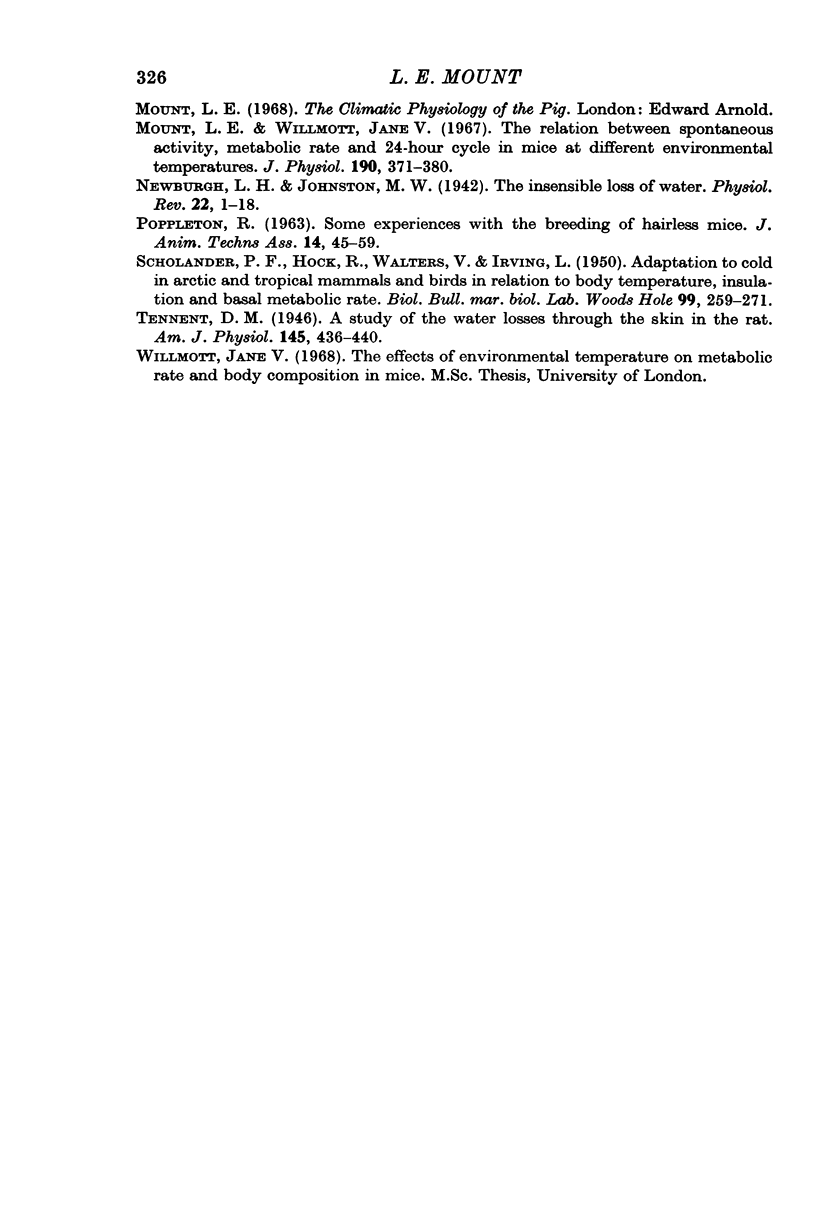
Selected References
These references are in PubMed. This may not be the complete list of references from this article.
- BARNETT S. A. The skin and hair of mice living at a low environmental temperature. Q J Exp Physiol Cogn Med Sci. 1959 Jan;44(1):35–42. doi: 10.1113/expphysiol.1959.sp001374. [DOI] [PubMed] [Google Scholar]
- Hey E. N., Katz G. The range of thermal insulaton in the tissues of the new-born baby. J Physiol. 1970 May;207(3):667–681. doi: 10.1113/jphysiol.1970.sp009087. [DOI] [PMC free article] [PubMed] [Google Scholar]
- Hosek B., Chlumecký J., Misustová J. A comparison of energy exchange and thermal insulation in hairless and normal mice. Physiol Bohemoslov. 1965;14(5):476–480. [PubMed] [Google Scholar]
- JOYCE J. P., BLAXTER K. L. THE EFFECT OF AIR MOVEMENT, AIR TEMPERATURE AND INFRARED RADIATION ON THE ENERGY REQUIREMENTS OF SHEEP. Br J Nutr. 1964;18:5–27. doi: 10.1079/bjn19640002. [DOI] [PubMed] [Google Scholar]
- Joyce J. P., Blaxter K. L., Park C. The effect of natural outdoor environments on the energy requirements of sheep. Res Vet Sci. 1966 Jul;7(3):342–359. [PubMed] [Google Scholar]
- Mount L. E., Willmott J. V. The relation between spontaneous activity, metabolic rate and the 24 hour cycle in mice at different environmental temperatures. J Physiol. 1967 May;190(2):371–380. doi: 10.1113/jphysiol.1967.sp008215. [DOI] [PMC free article] [PubMed] [Google Scholar]
- SCHOLANDER P. F., HOCK R., WALTERS V., IRVING L. Adaptation to cold in arctic and tropical mammals and birds in relation to body temperature, insulation, and basal metabolic rate. Biol Bull. 1950 Oct;99(2):259–271. doi: 10.2307/1538742. [DOI] [PubMed] [Google Scholar]


